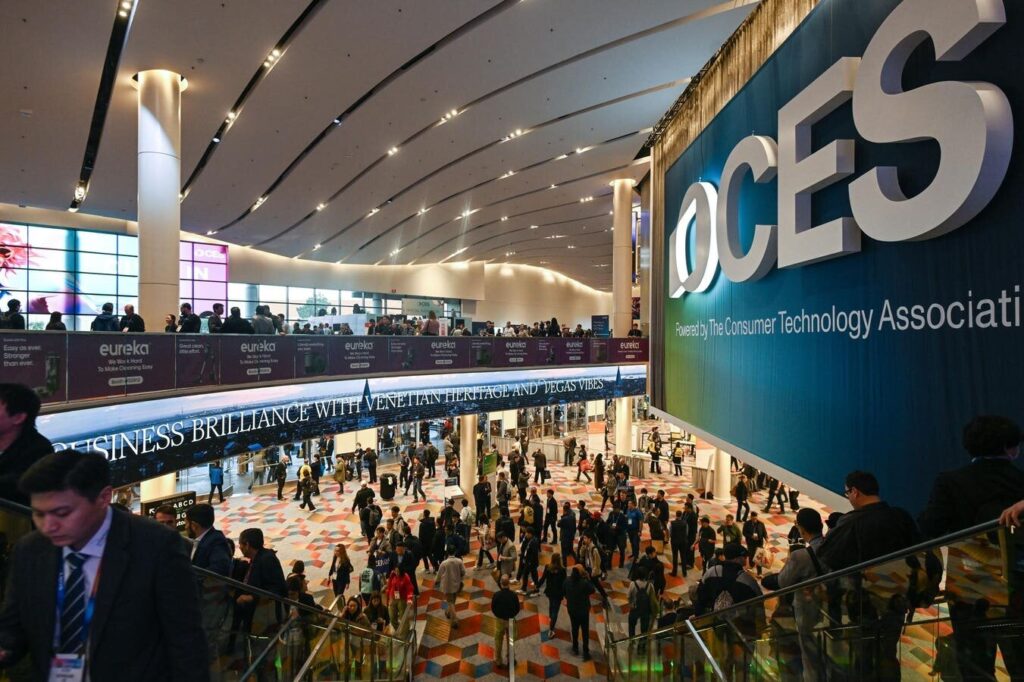As the curtains rise on CES 2025, the technology world turns its gaze to Las Vegas, where innovation takes center stage in a dazzling display of ingenuity and foresight. This year, the spotlight fell firmly on three transformative trends: the pervasive influence of artificial intelligence (AI), advancements in health wearables, and the burgeoning realm of smart glasses.
The omnipresence of AI was unmistakable at CES 2025. Across the sprawling exhibition space, vendors eagerly showcased their latest “smart” innovations. Whether embedded in TVs, vehicles, household appliances, or even personal gadgets such as watches and toilets, AI has become the defining characteristic of modern tech. This year’s exhibits underscored AI’s role in not only refining user experiences but also in driving forward the capabilities of everyday devices and applications.
Parallel to these developments was the surge in health-focused wearables. The technology behind these devices is rapidly advancing, with new offerings like Ringconn’s smart ring capable of detecting sleep apnea, and enhancements from Ultrahuman and Aura that push the boundaries of health monitoring. Dexcom’s Stelo and Abbott’s Libre Rio took center stage with devices designed to monitor glucose levels, delivering vital insights into how lifestyle choices affect one’s health. As these technologies continue to evolve, they promise to empower individuals with more control over their well-being.
Smart glasses also captivated attention, promising to revolutionize how we view and interact with the world. Leading the charge, Xreal unveiled its new Xreal One and Xreal Pro, capable of transforming any environment into a personal theater with immersive visual experiences. Even Realities introduced the Even G1, integrating live translation directly onto its lenses, breaking new ground in real-time communication. The discussions at CES highlighted the growing potential of smart glasses, projecting them as an integral part of our digital future, further enhanced by contributions from tech giants like Meta and Snap.
During a lively panel I moderated, industry leaders from Lenovo, Meta, and Snap delved into the capabilities and future of XR headsets and smart glasses. While gaming remains a key use case, enterprise applications are rapidly expanding, offering transformative experiences in training and education. Meta’s Quest headset leads with a robust app ecosystem, and Snap’s Spectacles have taken a firm hold in the market, reflecting a growing demand for wearable technology that’s both practical and accessible.
Looking ahead, the introduction of Google’s Android XR OS sets a formidable stage for further advancements. Major players such as Samsung, Qualcomm, and Xreal have already pledged their support, and Apple is expected to soon follow suit. This ecosystem promises a bright horizon for developers eager to explore the possibilities of smart glasses.
However, technical challenges remain, particularly in creating lenses that offer both functionality and resolution. Despite advancements, the journey towards fully realized smart glasses continues.
As CES 2025 wraps up, leaving a trail of innovation and excitement in its wake, it stands as a testament to the rapid evolution of technology. With AI, wearables, and smart glasses at the forefront, this year’s showcase has firmly positioned these trends at the heart of our digital transformation story, poised to redefine how we engage with the world in the years to come.


